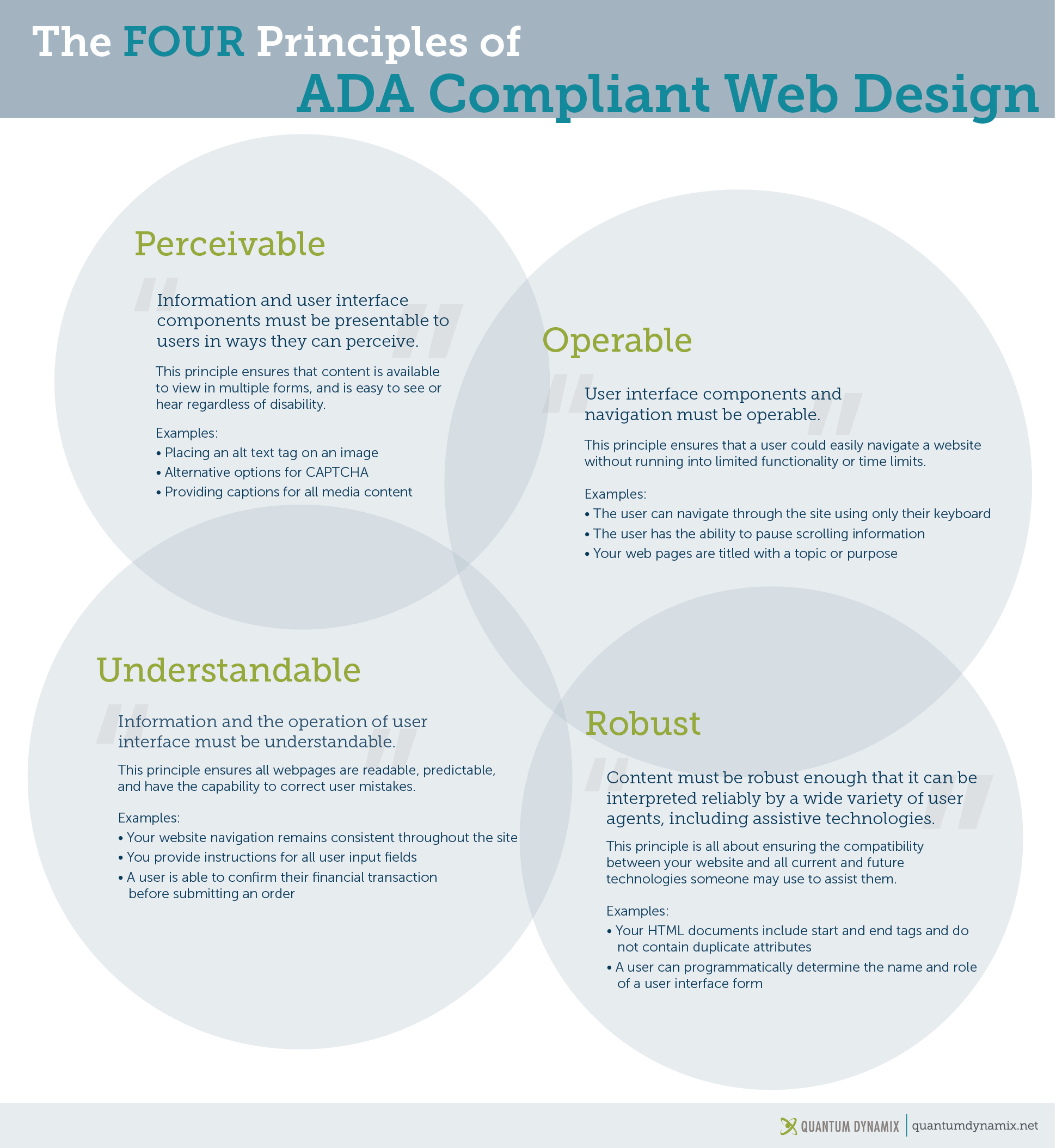Your Overview to ADA Compliance for Websites in 2018
| December 6, 2017 | Posted in Tips
Is your website accessible to ALL users? The Americans with Disabilities Act (ADA) of 1990 prohibits discrimination based on disability. Legal precedent has now evolved to include new forms of technology and communication under the act – like websites. ADA compliance for websites will be federally regulated come 2018! Find out more about the new ruling and what you could be doing to prep your website for these accessibility requirements.
Final Ruling’s Compliance Standards Become Mandatory in 2018
Starting January 18, 2018, all technology that falls under Section 508 standards will be required to meet new ADA accessibility standards. Websites fall under Section 508 standards.
One of the major changes to these information and communication technology (ICT) requirements is,
“incorporating the Web Content Accessibility Guidelines (WCAG) 2.0 by reference and applying Level A and Level AA Success Criteria and Conformance Requirements to websites, as well as to non-web electronic documents and software.” (Source)
What does this mean? There will now be a definitive list of guidelines that websites must abide by after January 18, 2018. The safe harbor clause of this ruling allows your existing content to remain as is unless altered after January 18th. The guidelines will apply to any page on your website that is updated after that date.
Four Major Components of ADA Compliance for Websites
The ruling references the Web Content Accessibility Guidelines (WCAG) 2.0 created by the W3C’s Web Accessibility Initiative. The World Wide Web Consortium (W3C) describes itself as “an international community where Member organizations, a full-time staff, and the public work together to develop Web standards.” The complete Web standards for ADA accessibility can be found here.
The guidelines are broken down by four main principles: perceivable, operable, understandable, and robust. Under each principle, there are guidelines that provide specific goals a website should work toward. Under each guideline, there are testable success criteria. Those criteria are graded A, AA, or AAA. This grade shows the level of conformity to accessibility, AAA being the highest. The law only requires A and AA guidelines to be met.

The most important component to understand in these guidelines are the principles and how they apply to a website.
1. Perceivable
“Information and user interface components must be presentable to users in ways they can perceive.” This principle ensures that content is available to view in multiple forms, and is easy to see or hear regardless of disability.
Examples:
- Placing an alt text tag on an image
- Alternative options for CAPTCHA
- Providing captions for all media content
2. Operable
“User interface components and navigation must be operable.” This principle ensures that a user could easily navigate a website without running into limited functionality or time limits.
Examples:
- The user can navigate through the site using only their keyboard
- The user has the ability to pause scrolling information
- Your web pages are titled with a topic or purpose
3. Understandable
“Information and the operation of user interface must be understandable.” This principle ensures all webpages are readable, predictable, and have the capability to correct user mistakes.
Examples:
- Your website navigation remains consistent throughout the site
- You provide instructions for all user input fields
- A user is able to confirm their financial transaction before submitting an order
4. Robust
“Content must be robust enough that it can be interpreted reliably by a wide variety of user agents, including assistive technologies.” This principle is all about ensuring the compatibility between your website and all current and future technologies someone may use to assist them.
Examples:
- Your HTML documents include start and end tags and do not contain duplicate attributes
- A user can programmatically determine the name and role of a user interface form
What should you do to prepare for new ADA standards?
Talk with your website provider to see how they plan to accommodate the upcoming 2018 regulatory changes. If you’re planning on a major website redesign in 2018, look for an agency that understands the importance of these compliance standards and knows how to accurately meet the guidelines.
Stay tuned for more articles covering ADA compliance in 2018!
Discover the Importance of a Compliant Website
Read our case study of VisionCorps, ‘The Importance of ADA Website Compliance,’ to realize first-hand the impact an accessible website can have, and see real-world examples of ADA website compliance. VisionCorps’ total page views increased 157.64% after redesigning their website to be ADA compliant. Get more facts and figures by reading the case study now.

